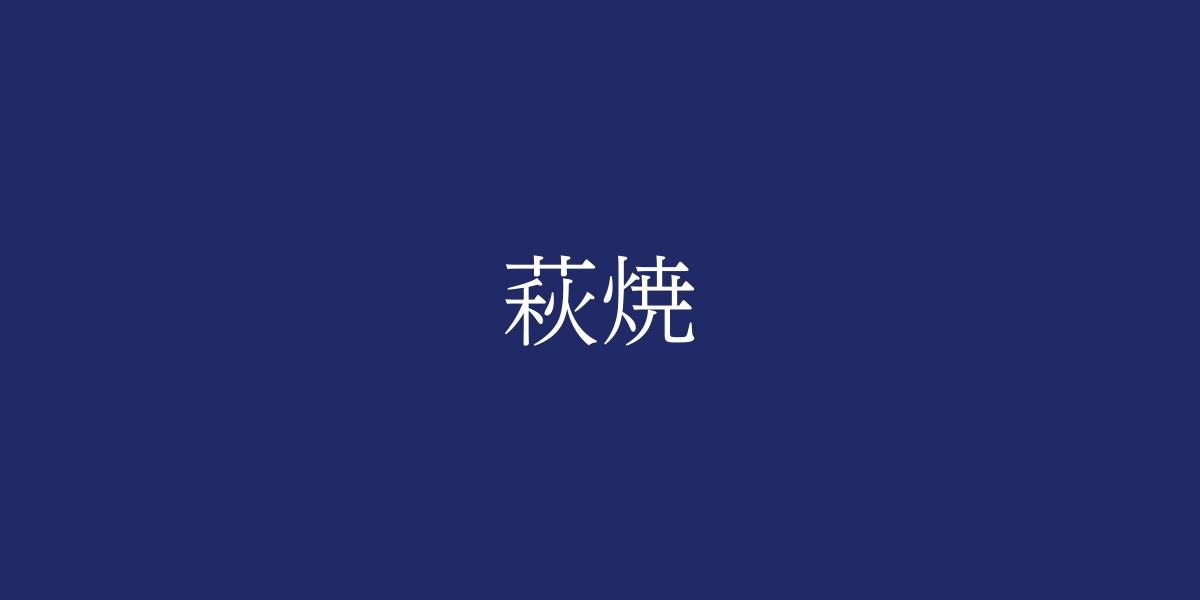Japan has long been celebrated for its seasonal beauty and traditional colors, imbued with numerous stories and history. Among these, Hagi-yaki pottery represents one of the quintessential elements of Japanese ceramic culture, deeply embedded in our lives through the ages. In this article, we will explore the allure of Hagi-yaki, delving into its beauty and history, and discovering where it can be purchased.
What is Hagi-yaki?
Hagi-yaki is a type of traditional Japanese pottery known for its rustic, warm texture and the unique way it enhances its flavor with use. The colors of Hagi-yaki, such as pale pink, cream, and bluish-green, evoke the serenity of nature. Each piece varies in expression due to the application of glaze, giving each form a distinct personality even when sharing the same shape.
The Production Area of Hagi-yaki
Hagi-yaki is primarily produced in the Hagi area of Yamaguchi Prefecture. This region is blessed with abundant natural beauty and high-quality clay, providing an ideal environment for the production of Hagi-yaki. The serene natural surroundings of this area inspire the creativity of ceramicists, making it a pivotal location for pottery.
The History of Hagi-yaki
The history of Hagi-yaki dates back about 400 years. It began in 1604 when Mori Terumoto, the first lord of the Hagi Clan, invited Korean potters to develop techniques that laid the foundation for Hagi-yaki. Since then, it has evolved alongside the tea ceremony culture, becoming intimately connected with Japan’s historical narrative.
The Manufacturing Process of Hagi-yaki
The manufacturing process of Hagi-yaki is preserved through traditional techniques. Here are the steps involved:
- Clay Selection: Select high-quality clay suitable for Hagi-yaki.
- Clay Preparation: Mix the clay with water and knead it to remove air.
- Shaping: Shape the pottery using either wheel throwing or hand-building techniques.
- Drying: Allow the shaped pottery to dry naturally.
- Bisque Firing: Fire once at around 800 degrees Celsius to harden the clay.
- Glazing: Apply glaze to the bisque-fired pottery.
- Glost Firing: Fire again at approximately 1230 degrees Celsius to complete the piece.
Representative Hagi-yaki Manufacturers
Many kilns produce Hagi-yaki, but here are three representative manufacturers:
- Hagiwara Toen
A long-established kiln that continues to innovate while maintaining traditional techniques.
Address: Yamaguchi Prefecture, Hagi City, Oaza-Horiuchi - Kumagai Pottery Shop
A kiln that embraces traditional Hagi-yaki techniques to create pottery suited for modern lifestyles.
Address: Yamaguchi Prefecture, Hagi City, Oaza-Tsuchibara - Miwa Kyusetsu
A kiln run by the tenth generation head, known for its unique glaze research.
Address: Yamaguchi Prefecture, Hagi City, Oaza-Tsubaki Higashi
Where Can You Buy Hagi-yaki?
Hagi-yaki can be purchased at the following locations:
- Hagi-yaki Traditional Craft Hall
A facility where you can learn about the history of Hagi-yaki and purchase pieces.
Address: Yamaguchi Prefecture, Hagi City, Tsubaki Higashi - Hagi-yaki Pottery Village
An area where many kilns are located, allowing direct purchase from artisans.
Address: Yamaguchi Prefecture, Hagi City, Oaza-Takasago Kami - Hagi Toen
A specialty store that handles a variety of Japanese ceramics, focusing on Hagi-yaki.
Address: Yamaguchi Prefecture, Hagi City, Oaza-Tsuchibara
Related Facilities for Hagi-yaki
The following are facilities related to Hagi-yaki where you can deepen your understanding:
- Hagi Ceramic Museum
A museum that displays masterpieces of Hagi-yaki.
Address: Yamaguchi Prefecture, Hagi City, Tsubaki Higashi - Village of Hagi Ceramics
A facility where you can experience pottery making and immerse yourself in the culture of Hagi-yaki.
Address: Yamaguchi Prefecture, Hagi City, Oaza-Takasago Kami - Miwa Kyusetsu Cooperative
A cooperative of Hagi-yaki kilns, offering exhibitions and sales of their work.
Address: Yamaguchi Prefecture, Hagi City, Tsubaki Higashi
Summary of Hagi-yaki
Hagi-yaki, backed by its historical and traditional depth, is a symbol of Japan’s ceramic culture. The unique textures that become richer with use, and the soft colors that fit comfortably in users’ hands, are the charms of Hagi-yaki. Even today, its beautiful shapes and colors continue to enchant many. Through this article, we invite you to touch and experience the profound appeal of Hagi-yaki for yourself.

























